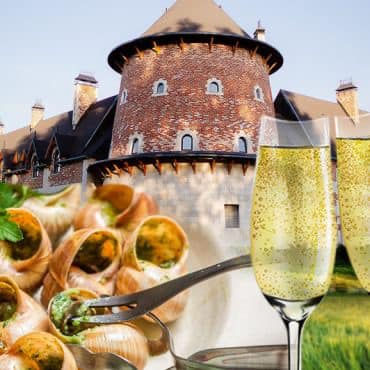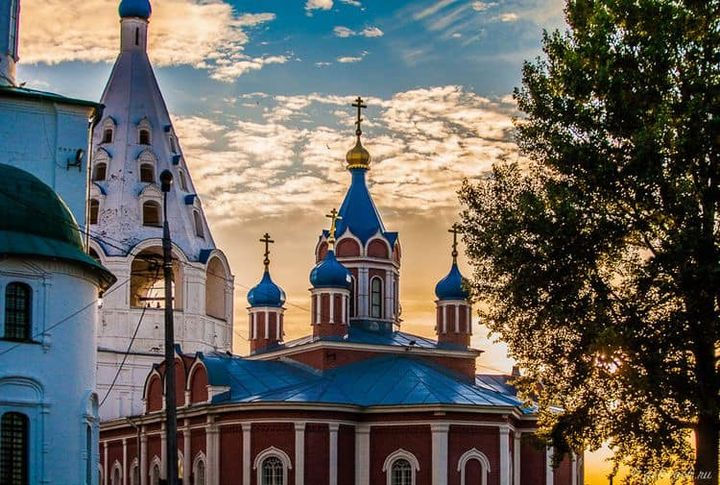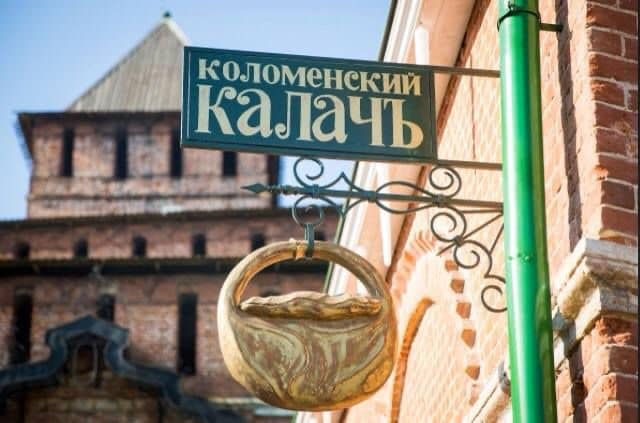





Kolomna
Tour program Kolomna
1 day
10h-13h Departure at 10 am from the city center by Mercedes Sprinter to Kolomna (100km, 3 hours)
13h Check-in at the hotel Osobnyak 1825 (
14h -15h lunch at the restaurant “At the Pyatnitsky Gates”
Cafe of traditional Russian cuisine in the old part of the city.
Located in a 19th-century house and complemented by antique furniture and interior details, it immerses guests in the atmosphere of the merchant life of that time. Chef Antropov Alexey, member of the National Guild of Chefs of Russia, Honorary Member of the Turkish Culinary Federation, host of television shows on culinary topics. Russian cuisine, author
15h-18h City walking tour
Let's start our acquaintance with the ancient city from its heart, the Kolomna Kremlin. The preserved fortress wall of the 16th century remembers many significant events. You will admire the panorama of the Bobrenev Monastery from the high bank, learn about the unusual architecture of the Church of St. Nicholas in Posada, see the Epiphany Staro-Golutvin Monastery near the Oka and the Church of the Holy Trinity in Shchurovo. And also the Governor's House, the oldest secular building in Kolomna, and merchant's mansions.
Kolomna is a unique spiritual center of the Moscow region and Russia. Why is Kolomna called the "soul of Russia"? The laconic beauty of the monastery fences made by Matthew Kazakov can hardly compete with the luxurious decoration of the Trinity-Sergius Lavra or the white-stone splendor of ancient Suzdal. But at the same time, here in the outback, away from the main tourist routes of Russia, in the age-old silence of ancient monasteries lives the "SOUL OF RUSSIA". It is perhaps difficult to find a city in Russia that has 420 historical and cultural monuments, 25 of which are of federal significance.
The historical and spiritual center of the city is the Kolomna Kremlin. During the walk we will see and visit the magnificent ensemble of the main square with the Assumption Cathedral, the construction of which dates back to the reign of Dmitry Donskoy; the Tikhvin Church with a hipped bell tower, the complex of the Novo-Golutvin Monastery and the Bishop's House; the ensemble of the Brusensky Monastery with the Assumption Church and the Exaltation of the Cross Cathedral; Church of the Resurrection and Church of St. Nicholas Gostiny.
The settlement adjoins the Kolomna Kremlin - the face of the city of small artisans, merchants, part of a large bargaining that was noisy with trade outside the Kremlin walls in different eras. In Kolomna there is also the Staro-Golutvin Monastery, founded by St. Sergius of Radonezh, where the Kolomna Theological Seminary is located next to him.
For ten centuries, Kolomna has gone from a Slavic settlement and a border fortress of the Ryazan principality, the most important strategic point of the Moscow state, the church capital of the region, a noisy trade and craft city to the modern cultural center of the capital region.
The program includes:
• Temples of the Kolomna Kremlin;
• Brusensky and Novo-Golutvin convents of the Kremlin;
• Assumption Cathedral;
• Church of the Epiphany in Gonchary (the only church in the southeast of the Moscow region that did not close during the Soviet years);
• The most ancient temple of the Moscow region - the Conception of the Forerunner and the Baptist of the Lord John.
•
Dinner at the restaurant "Rulki up"
. visiting the ancient temple on Gorodischi and the Starogolutvin Monastery.
It is possible to visit the source, plunge into it and draw water.
Also, by agreement, we can agree on holding a common prayer service in the evening by candlelight.
28.09 Breakfast at the hotel at 10 am
11h-12h30 visit to the museum of marshmallows, master class on making marshmallows
13h-14h Lunch “At the Pyatnitsky Gates”
If there is navigation, a boat trip
Departure to Moscow at 15:00 or 16:00 if navigation is
You can also add to the program:
Museum "Marshmallow Factory" with a theatrical program, tea drinking and pastille tasting 1 hour / 650 rubles / ticket (as part of a group);
Museum "Kolomensky kalach" with a theatrical tour and tea party with kalach 1 hour / 550 rubles / ticket (as part of a group);
Museum-shop "Fragrant joys" with a theatrical tour and master class 1 hour / 550 rubles / ticket (as part of a group);
Museum-residence "ArtKommunalka" with a theatrical program "Quest for communality" 1 hour / 450 rubles / ticket;
Museum-shop "Confectionery of the cook P.P. Shvedov" with a theatrical program, tea drinking and candy tasting 1 hour / 500 rubles / ticket;
Museum "Kuznechnaya Sloboda" + showing the horseshoe forging process (master class) 1,5 hour / 350 rubles / ticket + 2,000 rubles / group (master class);
Russian Knights. Tour of the fortification Kremlin 1 hour / 400 rubles / ticket (as part of a group);
! Without solemn meetings, theatrical submissions and interactive exposure "Pytoshnaya" and "Dungeon".
A small city with a great history is about Kolomna. Its history spans more than eight centuries. Local residents, talking about their city, will always note: Kolomna is only 30 years younger than Moscow! The year of birth of the city is considered to be 1177 - this is the date of the first mention in the annals. In fact, the surroundings of Kolomna are so convenient for life and picturesque that people have chosen them for a very long time - back in the Stone Age (12 millennium BC). In the VI century BC. Finno-Ugric peoples lived in this place. And from the 7th-8th centuries, the Slavs began to penetrate here (their settlement dates back to the 10th-11th centuries). The city itself arose around 1140-1160. At the dawn of its existence, Kolomna was a fortification on the border of the Ryazan and first Vladimir-Suzdal, and then the Moscow principalities. In the struggle for the city - the key to three rivers - the Muscovites defeated the Ryazans, and the Kolomna lands became the first of those annexed to Moscow. Since then, the fate of Kolomna has been forever intertwined with the history of the capital.
The name of Kolomna, as the historian N.M. Karamzin, is found in history in two cases: either the Tatars burn it, or the Russian army is going to go against the Tatars in it. The city suffered from enemies more than once: it was ravaged by the troops of Batu, Duden, Tokhtamysh, Edigei, Ulu-Muhammed, Devlet Giray. And Vsevolod the Big Nest, and Dmitry Donskoy, and Ivan III, and Ivan the Terrible, and Boris Godunov gathered rati here. At the turn of the XIV - XV centuries, Kolomna was the richest city of the Moscow principality after Moscow. During the feudal war of 1425 - 1453. Kolomna for some time was the real capital of Muscovy.
In the 16th century, a powerful Kremlin was built here - the twin of the Moscow Kremlin. After that, the enemies never managed to take Kolomna by storm. Only in the Time of Troubles the city was captured by deceit by the Poles.
By the 17th century, Kolomna had turned from a warrior city into a rich trading city.
The turning point for Kolomna was the opening of the Moscow-Saratov railway in 1862. Kolomna merchants lost their intermediary role in Moscow's trade with other regions of the country, and the commercial greatness of Kolomna was lost. However, since that time, transport engineering began to develop in the city. The Kolomna Machine-Building Plant grew out of the railway workshops and became one of the country's largest enterprises of this profile. In Soviet times, several large enterprises, including the city-forming ones, worked in the city. Kolomna became the industrial, scientific and cultural center of the Moscow region. But at this time the city disappeared from the tourist map of Russia. Kolomna was "closed" because of the "mailbox" - a secret design bureau is now developing modern missile systems.
For a long time the city had an unattractive appearance: in 1920-1930. churches and monasteries were destroyed, many buildings of civil architecture were depersonalized.
Currently, most of the monuments have been restored. The sights of the city are appreciated - Kolomna is included in the "Provincial Ring of the Moscow Region".
Thanks to the joint efforts of the municipal authorities and city entrepreneurs, Kolomna has become one of the most comfortable cities in Russia.


